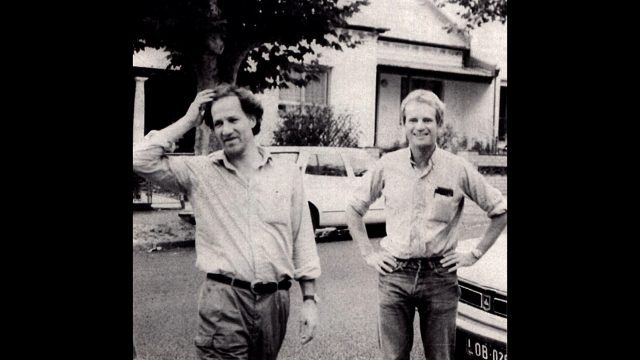
Werner Herzog follows the unique path of his friend Bruce Chatwin in Nomad
NOMAD: IN THE FOOTSTEPS OF BRUCE CHATWIN (Werner Herzog, 2019)
Opens Wednesday, August 26, $12
Live virtual Q&A with Werner Herzog on Wednesday, September 2, free, 6:00
Film Forum online
Near the start of Nomad: In the Footsteps of Bruce Chatwin, writer-director Werner Herzog says, “Chatwin was a writer like no other. He would craft mythical tales into voyages of the mind. In this respect, we found out we were kindred spirits.” As the intimate film, which opens virtually at Film Forum on August 26, reveals, they are indeed kindred spirits, a pair of iconoclastic adventurers who detailed their journey in books (Chatwin) and documentaries (Herzog). “In this film here,” Herzog explains, “I will follow a similar erratic quest for wild characters, strange dreamers, and big ideas about the nature of human existence. These were the themes Chatwin was obsessed with.” In fiction and nonfiction works such as Grizzly Man, Fitzcarraldo, Cave of Forgotten Dreams, Encounters at the End of the World, Happy People: A Year in the Taiga, Into the Abyss, and Into the Inferno, the German filmmaker has shared his obsessions, going deep below the surface of the Earth and far into space while introducing us to a sea of fascinating humanity. “Bruce Chatwin was searching for strangeness,” Herzog notes. So is Herzog.
Born in Sheffield in 1940, Chatwin was a travel writer extraordinaire, the author of such books as The Songlines, In Patagonia, and On the Black Hill that take readers across the planet, meeting unusual people and animals in unusual places, from a Brazilian slave trader and Welsh twins to dinosaurs and Aboriginal rituals. Divided into such chapters as “The Skin of the Brontosaurus,” “Landscapes of the Soul,” “Songs and Songlines,” “The Nomadic Alternative,” and “Journey to the End of the World,” the film follows Herzog as he explores Chatwin’s legacy and their close friendship, investigating cultural appropriation by missionaries, technology as distraction, ancient cave drawings, the last nomadic people of Tierra del Fuego, the curative benefits of walking, and such concepts as truth, reality, and authenticity. He speaks with a wide range of people who knew Chatwin, including his widow, Elizabeth Chatwin; his biographer, Nicholas Shakespeare; anthropologist Petronella Vaarzon-Morel; musician and writer Glenn Morrison; Alyawerre elder Michael Liddle Pula; Arrernte elder Marcus Wheeler; Shaun Angeles Penance of the Strehlow Research Centre; writer Peter Bartlett; Warlpiri elder Robin Granites; and Scream of Stone mountain guide Alberto Castillo, who offer beguiling insight into Chatwin, who packed a lot of living into his too-short life — he died of AIDS in 1989 at the age of forty-eight.
But as much as we learn about Chatwin in the film, it’s what we discover about Herzog that gives it its dramatic punch. The director — who adapted Chatwin’s 1980 book, The Viceroy of Ouidah, into the 1987 film Cobra Verde, the final collaboration between Herzog and actor Klaus Kinski, which is a story in itself — is thoroughly enamored of Chatwin; we often see him on camera discussing their relationship, his eyes sometimes tearing, other times glowing, doing both when Shakespeare shows him Chatwin’s annotated copy of the Cobra Verde screenplay, which Herzog has not seen before, or when Herzog talks about Chatwin’s famous rucksack, which he has been using on his own nomadic adventures for decades. Herzog might be too close to his subject, resulting in occasional self-indulgent moments, but watching him open up is as enchanting as finding out so much about Chatwin. They both share the belief that “history aspires to the symmetry of myth,” which gets right to the heart of Nomad. Herzog will participate in a free, live, virtual Q&A on September 2 at 6:00; the film can be rented now online for $12 for 72 hours.